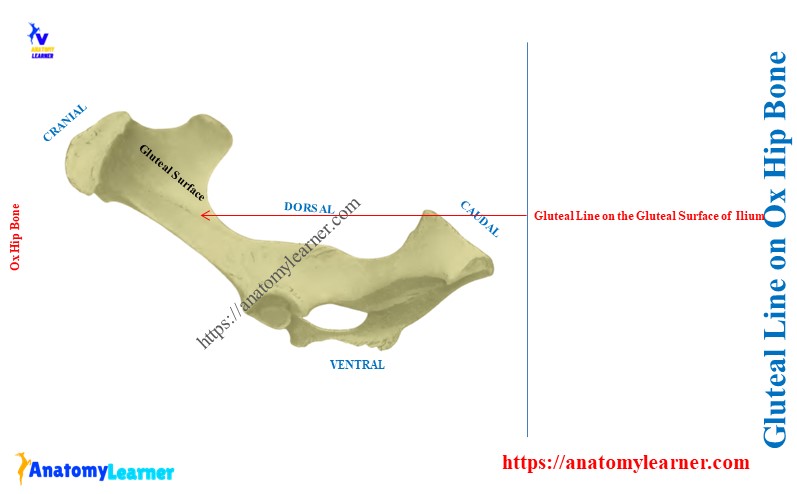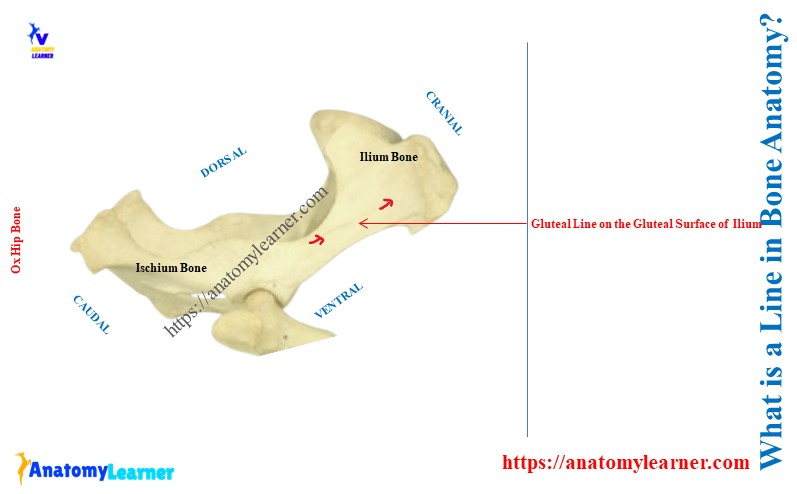The osteological terms line, spine, and crest are the different forms of elongated bony elevation. Here, I will answer the question – ‘what is a line in bone anatomy?’ with an example.
Quick answer and explanation: the line in the bone anatomy is a faint elongated elevation. Typical features of the line are found in the gluteal surface of the hip bone and the caudal surface of the tibial bone.
I will show the typical features of the line from the animal bones with the diagram. Thus, you will easily identify them from the different bones of the animal skeleton perfectly.
What is a line in bone anatomy?
Explanation of the line in anatomy: the bones of the animal skeleton possess different types of bony projections. The line term is applied when the specific bone possesses a faint elongated projection.
Here, the diagram shows the lines from the lateral surface of the ox scapula bone.

Table 1 shows the typical features of the line in the bone anatomy –
| Line in the bone anatomy | Features of the line |
| What is a line? | One type of bony projection |
| Type of bony projection | Faint elongated bony projection |
| Edge of the projection | Simple and smooth |
| A unique feature of the line | Gradually diminish the elongated projection |
| Examples of lines in the bones | Gluteal lines, popliteal lines, |
Examples of lines in the bone anatomy
- A gluteal line on the gluteal surface of the animal hip bone,
- The popliteal line on the caudal surface of the animal tibia bone,
- Muscular lines on the caudal surface of the animal tibia bone,
- Several rough lines on the infraspinous fossa of the ox or horse scapula bones,
Explanation of the line from ox hip bone
Here, the diagram focuses on the cranial part of the ox hip bone. The cranial wide, concave, caudal narrow, and convex surface of the ilium bone is known as the gluteal surface.

Here, the cranial wide and concave part of the gluteal surface is crossed by curved bony elevation. This bony elevation is faint cranially and can not be seen on the top.
That means this elongated bony elevation becomes faint gradually on the gluteal surface. This faint bony elongated elevation is the gluteal line of the ox hip bone.
Lines on the caudal surface of ox tibia bone
Here, the diagram focuses on the features of the caudal surface of the ox tibia bone. This caudal surface is flattened and divided into two parts by the prominent and elongated elevation. This is the popliteal line of the ox tibia bone.

The popliteal line of the ox tibia bone runs obliquely. It extends from the proximal wide part of the lateral border to the midline of the medial narrow border of the body of the tibia.
Again, there are several elongated and faint bony projections on the caudal surface of the ox tibia. These are the muscular lines on the caudal surface of the ox tibia bone.
You may know the differences among the line, spine, and crest from the below-mentioned article –
Let’s see a variety of the bony projections of the animal skeleton’s bones –
Protuberance – external occipital protuberance,
Prominence – sacral crest or sacral tuber (bony prominence from the sacrum bone), and
Eminence: – Example – iliopubic eminence on the cranial aspect of the ox pubic bones.
Conclusion
So, the line is a faint elongated elevation of the bone in anatomy. The animal hip’s gluteal surface and the ox tibia’s caudal surface show the line’s typical features. But, other bones of the ox, like the scapula and humerus, also possess lines on their different surfaces.

